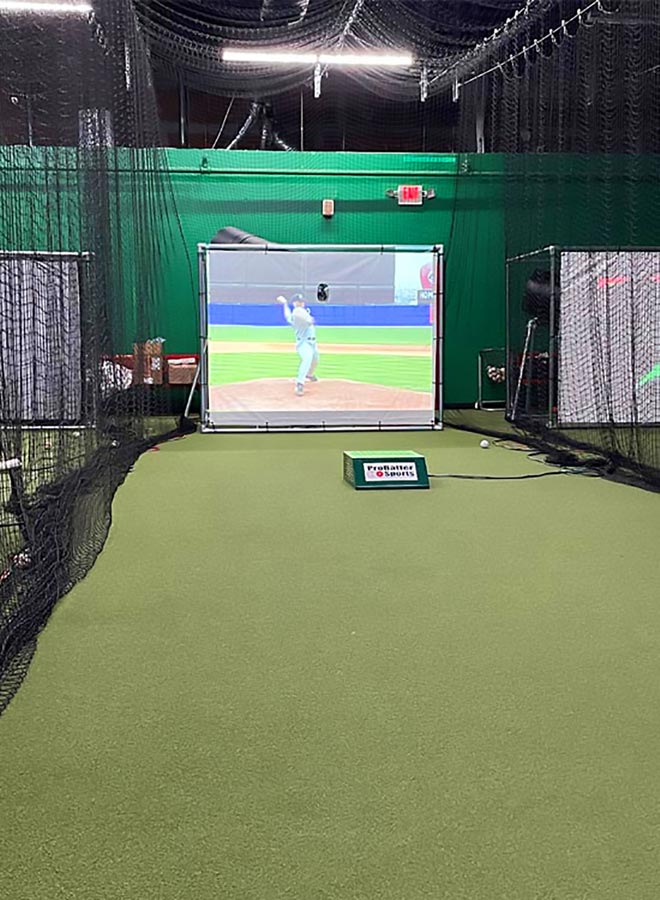What Are the Performance Benefits for Athletes? Achieving Peak Condition with PX3 Training
When it comes to professional baseball innovation is the name of the game. The competition is fierce, and teams are constantly searching for ways to gain even the slightest edge. One tool that has become a favorite among pro teams is the PX3 simulator. This cutting-edge technology isn’t just a fancy gadget; it’s a game-changer that helps players hone their skills with precision and consistency. But why exactly do pro teams prefer the PX3 simulator?
Realism That Transforms Training
The PX3 simulator is prized for its unmatched realism. When you’re training at the highest level, the details matter. Pro teams love that the PX3 can replicate in-game conditions, right down to the pitch speed, ball movement, and even the release point of specific pitchers. This kind of authenticity allows players to face the same scenarios they would encounter during live games, only without the unpredictability that can come with traditional training methods.
Coaches say it’s like having the best of both worlds—the control of a practice environment with the dynamic challenge of a real game. A PX3 session might involve facing a series of fastballs followed by an unexpected slider or curveball, just like in a real at-bat. The ability to simulate actual game situations with pinpoint accuracy makes players sharper, faster, and more adaptable.
Tailored Training for Every Player
Every player has unique strengths and weaknesses, and one of the PX3 simulator’s greatest advantages is its ability to offer customized training. Pro teams love this feature because it means no two players get the same experience. A batter struggling with high-velocity pitches can train against a virtual flamethrower, while another player might focus on off-speed pitches or specific breaking balls.
The PX3 allows coaches to set up personalized drills that target each player’s needs. Imagine a player who has trouble hitting inside pitches. With the PX3, you can fine-tune the pitch location and speed to give that player the exact reps they need to improve. This level of customization ensures that no minute of training is wasted.
Data-Driven Improvement: A Coach’s Dream
In professional sports, data isn’t just useful—it’s essential. The PX3 simulator doesn’t just mimic game scenarios; it also provides an in-depth analysis of each player’s performance. After each session, coaches and players have access to a wealth of statistics that can highlight areas of improvement and track progress over time.
Here’s what the PX3 can track:
- Swing speed and exit velocity,
- Pitch recognition and reaction times,
- Contact points on the bat,
- Strike zone discipline.
For coaches, this data is invaluable. It allows them to make evidence-based decisions about how to adjust a player’s mechanics or approach. It’s not just about intuition anymore—it’s about seeing hard numbers and using them to shape the next phase of training.
One top coach noted, “We used to rely on feel and visual cues, but now we can see exactly what’s happening in real-time. The PX3 gives us the insights we need to make immediate corrections.”
Mental Conditioning: Preparing for Pressure
The PX3 simulator isn’t just about mechanics and physical training. It’s also a powerful tool for mental conditioning. Baseball is as much a mental game as it is a physical one, and players need to be prepared for high-pressure situations. The PX3 allows coaches to simulate those exact moments—game-winning at-bats, full-count pitches, or bases-loaded situations—helping players build the mental toughness they’ll need when the stakes are high.
Top players praise the PX3 for how it helps them stay calm and focused under pressure. When you’ve already experienced that clutch moment in the simulator, it’s much easier to handle the real thing on game day. One player said, “The PX3 has trained me to slow things down in the box. It’s like I’ve already been there, so nothing surprises me.”
Consistent, Year-Round Training
The professional baseball season is long and grueling, and finding ways to maintain consistency in training can be a challenge. That’s another reason why pro teams are turning to the PX3. Unlike live pitching, which requires a rested pitcher and the right conditions, the PX3 is available year-round, ready to deliver consistent reps whenever needed.
Players can step into the simulator during the offseason, rain or shine, and get high-quality at-bats that replicate real game situations. This consistency is crucial for maintaining form, especially during long breaks or in between games. Pro teams appreciate that they no longer have to rely on weather or scheduling to get in those vital reps.
Conclusion
So, why do pro teams prefer the PX3 simulator? The reasons are clear. For pro teams looking to push their players to the next level, the PX3 is more than just a training tool—it’s a game-changer. Whether it’s the consistency, the detailed feedback, or the ability to simulate high-pressure moments, the PX3 has become an indispensable part of professional baseball. And for the players, it’s a way to continuously sharpen their skills, no matter the time or place.




